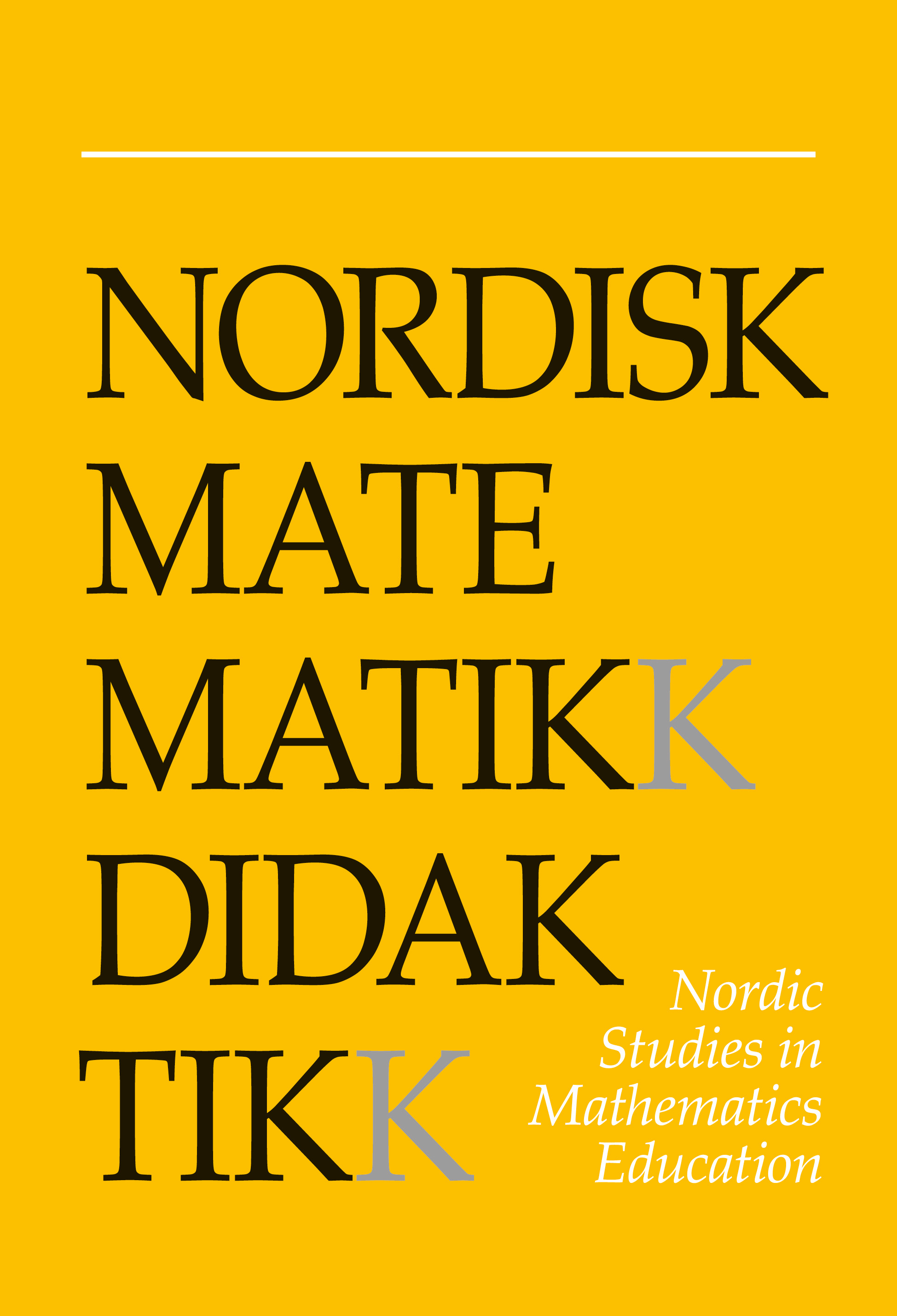Preservice teachers' perceptions of gender equity issues in the mathematics classroom
DOI:
https://doi.org/10.7146/nomad.v6i1.146499Abstract
The purpose of the study was to identify preservice teachers' perspectives on gender equity and to explore how they process the information they receive about gender issues. Data were collected through written surveys administered to 225 preservice and inservice teachers enrolled in mathematics and science education (methods) courses at the university. Data were analyzed using Paine's (1990) categories of orientations to diversity: individual difference, categorical difference, contextual difference, and pedagogical difference. The study suggests that most preservice teachers have an individual difference view of gender equity in which they strive to treat all students the same to avoid discrimination. Some students hold a categorical view of gender equity in which they strive to overcome stereotypes about boys and girls. A small number of students actively denied that gender issues have any relevance to education.
References
Barnes, M. (1996). Gender and mathematics: Shifting the focus. Focus on Learning Problems in Mathematics, 18(1, 2, & 3), 88-96.
Becker, J. R. (1981). Differential treatment of females and males in mathematics classes. Journal for Research in Mathematics Education, 12(1), 40-53. https://doi.org/10.2307/748657
Campbell, P. B. & Sanders, J. (1997). Uninformed but interested: Findings of a national survey on gender equity in pre-service teacher education. Journal of Teacher Education, 48(1), 69-75. https://doi.org/10.1177/0022487197048001010
Fennema, E. (1996). Mathematics, gender, and research. In G. Hanna (Ed.), Towards gender equity in mathematics education (pp. 9-26). Dordrecht: Kluwer. https://doi.org/10.1007/0-306-47205-8_2
Fennema, E., & Peterson, P. (1985). Autonomous learning behavior: A possible explanation of gender-related differences in mathematics. In L. C. Wilkinson & C. B. Marrett (Eds.), Gender influences in classroom interaction. Orlando: Academic Press. https://doi.org/10.1016/B978-0-12-752075-9.50007-6
Fennema, E., & Peterson, P. L. (1986). Teacher-student interactions and sex-related differences in learning mathematics. Teaching and Teacher Education, 2(1), 19-42. https://doi.org/10.1016/0742-051X(86)90003-X
Forgasz, H. J., & Leder, G. C. (1995). Learning mathematics in mixed-sex small group settings: Three case studies. Paper presented at the ICMI, Melbourne, Australia.
Good, T. L., Sikes, J. N., & Brophy, J. E. (1973). Effects of teacher sex and student sex on classroom interaction. Journal of Educational Psychology, 65(1), 74-87. https://doi.org/10.1037/h0034816
Hart, L. E. (1989). Classroom processes, sex of student, and confidence in learning mathematics. Journal for Research in Mathematics Education, 20(3), 242-260. https://doi.org/10.2307/749514
Koehler, M. S. (1992). Mathematics teaching practices and their effects. In D. A. Grouws (Ed.), Handbook of research on mathematics teaching and learning (pp. 115-126). New York: Macmillan.
Leder, G. C. (1992). Mathematics and gender: Changing perspectives. In D. A. Grouws (Ed.), Handbook of research on mathematics teaching and learning (pp. 597-622). New York: Macmillan.
Leinhardt, G., Seewald, A. M., & Engel, M. (1979). Learning what's taught: Sex differences in instruction. Journal of Educational Psychology, 71, 432-439. https://doi.org/10.1037/0022-0663.71.4.432
McCormick, T. M. (1994). Creating the nonsexist classroom: A multicultural approach. New York: Teachers College Press.
National Council of Teachers of Mathematics (1989). Curriculum and evaluation standards for school mathematics. Reston, VA: Author.
National Council of Teachers of Mathematics(1991).Professional standards for teaching mathematics. Reston, VA: Author.
National Council of Teachers of Mathematics (1995). Assessment standards for school mathematics. Reston, VA: Author.
Paine, L. (1990). Orientation toward diversity: What do prospective teachers bring? (Research Report 89-9). East Lansing, MI: National Center for Research on Teacher Education.
Sadker, M. & Sadker, D. (1994). Failing at fairness: How America's schools cheat girls. New York: Macmillan.
Webb, N. M. (1984). Sex differences in interaction and achievement in cooperative small groups. Journal of Educational Psychology, 76(1), 33-44. https://doi.org/10.1037/0022-0663.76.1.33
Downloads
Published
How to Cite
Issue
Section
License

This work is licensed under a Creative Commons Attribution-NonCommercial-ShareAlike 4.0 International License.



